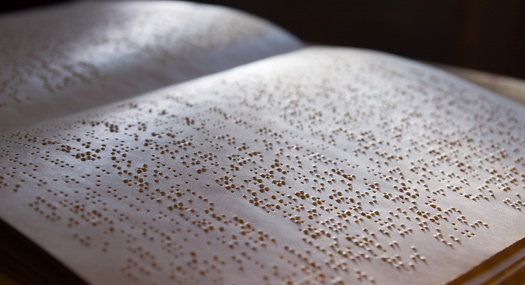Braille reading and writing, like any other skill, must be practiced to be perfect. However, sometimes a teacher of visually impaired children may have a caseload for several years that doesn't include any braille readers. How then can teachers keep braille skills intact so they are ready when needed? The following are some suggestions for practicing braille reading and writing.
Review instructional manuals used when initial learning took place. The texts used by university training courses or transcribing courses often have self-tests at the end of chapters. By taking these tests and reviewing the answers, those forgotten usage rules of braille can be reviewed.
Look up rules and contractions in English Braille American Edition, 1994, the official code book of braille in the United States. If it has been several years since first learning braille, it is important that updated rules are noted and incorporated into braille instruction with students.
Use the Literary Braille Refresher Course available from the National Braille Association (NBA). Designed to help individuals pass the National Literary Braille Competency Test (through the Library of Congress), it is an excellent review of the literary braille code. It is available in both print and braille. Call NBA at 716-427-8260 for ordering information.
Enroll in the literary braille transcriber's course through the National Library Service for the Blind and Physically Handicapped (NLS), Library of Congress. Braille transcribers are sorely needed throughout the country. The course is taken at home, and the lessons are sent in as they are completed. Feedback on each lesson is provided by the braille experts at NLS. Call NLS at 800-424-8567 for more information.
Write notes and letters in braille to other teachers of visually impaired children and ask them to write back. They may appreciate having the practice, too!
Become a braille pen-pal with a child or adult who is just learning braille. This will give both of you the opportunity to practice braille skills.
Contact a local consumer organization for names of braille users who may be interested in corresponding with you. These individuals sometimes write to the consumer magazines asking for pen-pals.
Carry a small slate and stylus on which to take short notes. The new Janus slate from the American Printing House for the Blind is ideal for this. It is a small, inexpensive plastic slate, the size of an index card. When one side of the card is filled up, simply flip the slate over and braille on the other side. Use it for taking down phone numbers, shopping lists, and other quick uses.
Create or interline books in braille for young children. These can be used in any classroom, but are especially appreciated in classrooms where a braille reader is in attendance.
Share the load with other teachers in your area. Even if you don't have a braille reader on your caseload, there may be another teacher who has a lot of transcribing to do and would appreciate your help.
When taking notes in print, use braille contractions. This will help keep the short form words and whole cell contractions in your mind and automatic for when you write them in braille.
Practice by reading braille books designed for young children, which often have simpler vocabularies and fewer words than materials brailled for adult use. Practice reading these books aloud to a group of children who have never seen braille. Share your enthusiasm for braille literacy with them!
